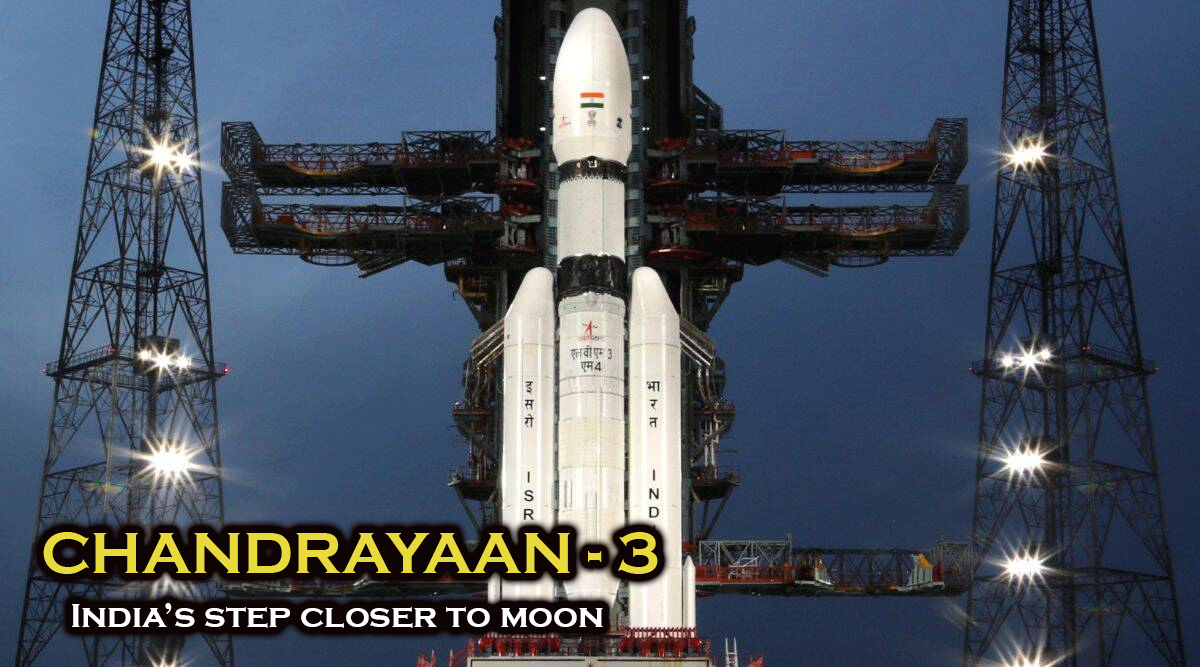The Indian Space Research Organisation (ISRO) launched Chandrayaan-3 on Friday afternoon as a follow-up to the Chandrayaan-2 mission, which failed to achieve a desired soft landing on the lunar surface back in 2019.
Chandrayaan-3 aims to land a rover on the Moon’s surface, a mission accomplished by only three nations till today. The mission’s main objectives include demonstrating the capability for a safe landing and roving on the lunar surface.
It is planned, that the spacecraft will touch down on the Moon’s south pole region on August 23. The spacecraft comprises a six-wheeled lander and rover module, equipped with payloads to collect data about the Moon’s surface.
Moreover, the rover named Pragyan, that will travel on the lunar surface, will not only gather data but also leave imprints of the ISRO and the national emblem, depicting the Lion Capital of Ashoka at Sarnath, symbolizing India’s presence and leaving a mark on the lunar surface.
Reaching the Lunar Surface: Chandrayaan-3’s Mission Path
Chandrayaan-3 ‘s Mission on the Moon
A successful touchdown will mark a significant achievement for ISRO, placing them among a small group of nations that have landed spacecraft on earth’s natural satellite.
Shortly after landing, the Chandrayaan-3 lander will unfold one side panel, creating a ramp for the rover. The rover will emerge from the lander’s belly, drive down the ramp, and commence its exploration of the lunar environment.
The solar-powered lander and rover will have approximately two weeks to study their surroundings as they are not designed to withstand the cold lunar night. The rover can only communicate with the lander, which establishes direct communication with Earth. In case of any issues, ISRO states that the Chandrayaan-2 orbiter can serve as a backup communications relay.
The lander carries four payloads:
- Chandra’s Surface Thermophysical Experiment (ChaSTE): Studies the thermal properties of the lunar surface.
- Radio Anatomy of Moon Bound Hypersensitive ionosphere and Atmosphere (RAMBHA): Measures changes in the local gas and plasma environment over time.
- Laser Retroreflector Array (LRA): A retroreflector provided by NASA, enabling lunar ranging studies by measuring the time it takes for laser signals to bounce back. This facilitates precise distance measurements to the Moon.
- Instrument for Lunar Seismic Activity (ILSA): Measures seismic activity at the landing site to analyze the subsurface crust and mantle.
The rover carries two payloads:
- Laser Induced Breakdown Spectroscope (LIBS): Determines the chemical and mineralogical composition of the lunar surface.
- Alpha Particle X-ray Spectrometer (APXS): Determines the elemental composition of the surface, with a focus on elements such as magnesium, aluminum, silicon, potassium, calcium, titanium, and iron.
NASA Congratulated ISRO
ISRO received congratulations from the chief of NASA, who expressed NASA’s interest in the scientific findings that will arise from Chandrayaan-3’s mission. The chief of the US space agency emphasized the keen interest of the United States in the outcome of the mission.
NASA’s Cheif Bill Nelson tweeted:
For Live CHANDRAYAAN-3 Updates, Click HERE !
